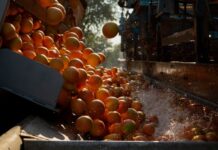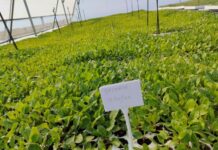By Ng’entu Njeru, Nestlé East and Horn of Africa at Nestlé East & Southern Africa Region
As the population of Africa continues to grow, it is estimated to double by 2050, our eating habits are evolving. It is not new, this shift, but in this age, it is fascinating to witness and be part of it because we are so connected and there is an even stronger cross-pollination than say, 100 years ago. There are two significant revelations in this constant moment of flux that jump out however we analyse food and nutrition. The first is that we continue to be more alike than ever before across tribes, provinces, and borders. The second is that whichever way we skin this cat, sustainability is fast becoming a determining consideration on matters to do with food security. The latter is an intersection that the entire world is dealing with, not only us here in east Africa.
While Africa has defied odds in terms of economic growth and the science and technology coming out of the continent, there remains endemic issues that deserve attention. Because about 40% of our population lives below the poverty datum line, earning below US$1,90 per day, eating habits remain rather primal. Many of us are driven to meet the discomfort of hunger at all main eating occasions. This means tummy fillers such as starch-based foods like yams, plantain, cassava, and maize flour, are central to our diets. The interest in nutritional content is minimal. As such, micronutrient deficiencies are a scourge in the region, and this is certainly not limited to east Africa, it is an issue across the entire continent. It is exacerbated by the fact that adults generally don’t have a fruit eating culture, nor do we actively consume dairy. The food industry has responded by formulating fortified foods for key eating occasions such as breakfasts – cereals and porridges, and suppers – traditional starches.
The centrality of cost goes beyond choice of meal to also impact quantities purchased. We are driven by affordability, with the aim of spending as little as possible out of incredibly constrained family budgets. Most families are looking to buy the most affordable packs, and these are those that meet the need for a single occasion of consumption. The way the food industry has responded to this is by providing single-use packs of different products through traditional trade, such as tuck shops and neighbourhood stores in low-income settings. Pricing of these packs has been an interesting negotiation too. We find the industry balancing a culture that does not have midpoints in price setting. For instance, a product that is 10 shillings, when its price increases, will generally move to 20 shillings, not 13 or 16 or any of the middle numbers. This trend generally means that food price increases have a shock factor, and increases move from affordable to expensive quite quickly.
Rampant upward mobility in emerging consumer segments tends to dominate the conversation in east Africa. The idea of a growing middle class is a hopeful conversation from the poorest continent, and it has attracted investment from both the public and private sector. Huge glitzy shopping malls exist in most African cities, and while they signify much needed development, they also deter many consumers from accessing nutritious foods. The perception that groceries available in a shopping mall is expensive is broadly accepted, limiting families to kiosks, hawkers and neighbourhood stores that have a much more limited variety. This keeps many families stuck with the same diets, with limited choice in nutrition, despite any increase in variety in the market. Expanding product lines in traditional trade is crucial to increasing access to a variety of food, especially affordable, nutritious foods, to these communities.
All these shifts in our eating habits are happening while the planet is facing the urgent need to reduce global warming. The effects of climate change have had a direct impact on our ability to produce food sustainably, and we can no longer think about where we are going with our consumption patterns without considering where our planet is. For the emerging consumer, however, this intersection of food and nutrition, with climate change, does not register as an urgent enough consideration. There are many reasons as to why this is so – most importantly – it is the question of affordability and access. For many African consumers, being able to have enough food for the immediate need to dispel hunger remains what is urgent – it is imminently existential. The depletion of the ozone layer is far removed from their hierarchy of needs. This means that if we want all consumers to care about sustainability, we ought to make food more accessible, and affordable. Firstly, it will dispel the urgency to fill tummies and allow consumers to start focusing more on the nutritional value of their food choices. Secondly, a focus on nutrition tends to connect quite easily, and strongly, to the way food is made, and the sustainable means employed in the process become a consideration. The hierarchy of needs in our consumers will shift to allow for a broader, more robust conversation on our evolving eating habits and their many intersections.
We are meeting this shift head on, future casting the change we want to see. In Kenya and the rest of east and southern Africa region – Nestlé is integrating sustainability discussions with food and nutrition programmes. This year, Nestlé 4 Healthier Kids, a programme aimed at encouraging healthier eating habit in schools, turns 10 years old in Kenya. The same schools doing this programme are also engaged in a sustainability campaign that seeks to encourage communities to be part of the shift from linear economies to circular economies through better waste management. Arming the future with better knowledge on that intersection between food security and sustainability will have a remarkable shift in our eating habits.









